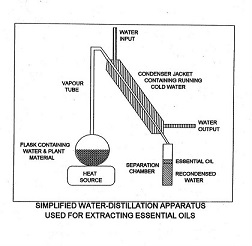Deepen Your Understanding Of Animal Biochemical Processes
This course is designed for people working in a human or animal health or science related profession, as practitioner, educator or researcher.
Understanding biochemistry gives you the power to:
- Interpret metabolic disorders and health issues.
- Improve nutrition strategies for animals.
- Contribute to research in medicine, veterinary science, and biotechnology.
In this course we examine a wide range of detailed metabolic processes.
What you will learn:
- common biochemical processes including glycolysis and glycogen metabolism
- lipid, amino acid and nucleotide metabolism
- enzyme activity, sugar and polysaccharide metabolism
- electron transport, oxidative phosphorylation and movement across membranes and a range of other processes.
Lesson Structure
There are 10 lessons in this course:
-
Introduction - What is metabolism, cell components, energy, ATP, oxidation - reduction.
-
Glycolysis and Glycogen Metabolism - What is glycolysis, the phases of glycolysis, pyruvate, glycogen and more.
-
Movement through Membranes - Transport mechanisms, different types of cellular transport.
-
Electron Transport and Oxidative Phosphorylation - Oxidative phosphorylation, citric acid cycle and more.
-
Sugar and Polysaccharide Metabolism - Gluconeogenesis, pentose phosphate pathway and more.
-
Lipid Metabolism - Fatty oxidation including beta oxidation, unsaturated fatty acid oxidation, ketone bodies, biosynthesis of fatty acids and more.
-
Amino Acid Metabolism - Transamination, amino acid catabolic processes, the urea cycle and biosynthesis.
-
Nucleotide Metabolism - Synthesis and regulation, nucleotide degradation, purines, nucleotide co-enzymes etc.
-
Enzyme Activity - Classification and kinetics, regulation etc.
-
Other Processes - Hormones, neurotransmitters and signal cascades and more.
Aims
-
Explain the interaction between the various biochemical processes within the animal cell.
-
Explain the processes of glycolysis and glycogen metabolism.
-
Understand the transport mechanism of bio-chemicals through animal membranes.
-
Explain the processes of electron transfer and oxidative phosphorylation, and their importance to energy regulation in animals.
-
Explain the metabolism of carbohydrates.
-
Explain the metabolism of lipids.
-
Explain the metabolism of amino acids.
-
Explain biochemical nucleotide metabolism.
-
Explain enzyme reactions and catalysis in biochemistry.
-
Explain other biochemical processes including biochemical communication through hormones and neurotransmission.
 In Biochemistry III (Animal Biochemical Processes) you have the opportunity to learn more about the fascinating biochemical processes found in all life forms. Metabolic processes comprise all the reactions in an organism that sustain its life. There are many biochemical pathways and reactions that either consume or provide energy, different types of molecules that are the basis of bigger structures, and reactions that take up energy and molecules to build up new structures.
In Biochemistry III (Animal Biochemical Processes) you have the opportunity to learn more about the fascinating biochemical processes found in all life forms. Metabolic processes comprise all the reactions in an organism that sustain its life. There are many biochemical pathways and reactions that either consume or provide energy, different types of molecules that are the basis of bigger structures, and reactions that take up energy and molecules to build up new structures.
Metabolism within an animal or plant is complex, involving many different chemical reactions; each having an effect upon others. Despite the complexity of living metabolism, organisms maintain relative stability by a set of processes known as homeostasis.
There are two main types of pathways in metabolism:
1. Catabolism: Pathways that result in the degradation of biochemical substances to smaller compounds and molecules, and that give energy away (liberate energy).
2. Anabolism: Pathways that result in the synthesis or building up of more complex compounds from simpler biochemical substances. They consume energy to build up the new materials (molecules, organelles, cells, tissues, organs).
There are four key characteristics common to metabolic pathways:
A. Metabolic pathways are irreversible.
B. Each metabolic pathway has a first committed step.
C. All metabolic pathways are regulated.
D. Metabolic pathways in eukaryotic cells occur in specific cellular locations
